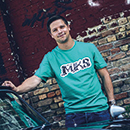The Touring Car Championship has given rise to special versions of some of the UK’s most popular road cars. Here are our favourites
Words: Jeff Ruggles
Back in the 1950s, marketing was a whole lot simpler. The emerging world of saloon car racing looked to be an ideal way for manufacturers to showcase the prowess of their latest tin-tops, and on Boxing Day in 1957, the British Saloon Car Championship arrived to fill the void for a national series. Jack Sears was crowned as the first champion in 1958, and though many might not remember the Austin A105 Westminster he drove for its racing pedigree, the motto “win on Sunday, sell on Monday” was well on its way to becoming a thing.
Indeed, it didn’t take long before manufacturers were building performance variants of their mainstream cars to homologate them for racing. Over the years, British Saloon Car Championship became a phenomenon, being renamed as the British Touring Car Championship in 1987 and inspiring the production of a host of memorable halo models for the road. Here, we’re celebrating iconic favourites born out of the championship’s first four decades.
Mini Cooper
For its first 32 years, the championship was run with a mix of classes, divided according to engine capacity. That meant a smaller car could end up a title winner – like the Mini Cooper in the hands of Rhodesian John Love in 1962.
As alien as it may seem nowadays, the Mini was never designed to be sporty. Creator Alec Issigonis intended it as a simple people’s car, but John Cooper – boss of his eponymous F1 team – had other ideas.
The Mini Cooper was officially launched in September 1961, with its new twin-carb 997cc motor producing 55bhp. This was primarily to homologate the car for saloon car racing rather than lure buyers into showrooms, but having the reigning world champion’s name on the car proved to be a masterstroke, and within a year of the launch, one in five Minis sold were Coopers.
The even hotter Cooper S would take things to the next level, famously winning the Monte Carlo Rally three times. It was launched in 1963 as the 1071 S, with 970 and 1275cc versions following in 1964 before the 1275 became the sole S model shortly after. Sadly, the Cooper was discontinued in 1969, with the Cooper S also dropped in 1971 because of BL’s desire to avoid paying royalties to John Cooper. However, Alec Poole still managed a BSCC title before that happened, taking a privately entered 970 S to title honours in 1969. What’s more, the Mini would enjoy a resurgence in the late ’70s when Richard Longman raced a 1275 GT to consecutive BSCC title wins in 1978 and 1979.

Lotus Cortina
The Lotus Cortina was a product of mutual benefit. Walter Hayes at Ford saw the potential sales impact of a successful BCSCC campaign, while a cash-strapped Lotus was keen to step-up its road car production. The two firms already had an existing relationship; the Lotus Elan was not only designed by an ex-Ford man Ron Hickman, but it used a Ford Kent pre-crossflow engine topped with aluminium twin-cam head.
First appearing in 1963 as the ‘Consul Cortina (Developed by Lotus)’, the car featured a 1557cc twin cam motor good for 105bhp, coil-over rear suspension rather than leaf springs, redesigned front suspension, wide steels, discs brakes and a smart interior featuring extra gauges and special seats. Outside, the Ermine White paint was enhanced by a trademark green stripe and Lotus badging, with early cars also getting aluminium panels.
The Lotus Cortina was an instant success. With Team Lotus campaigning the race cars, Jim Clark (who had played an important role in the car’s development) won the British Saloon Car Championship in 1964. In 1965, Sir John Whitmore won the European title for Alan Mann Racing.
The legendary Mk1 bowed out in 1966, with the Mk2 version launched in March 1967. This time the cars were marketed as Cortina Lotus, and were built in-house at Ford’s competition department in Boreham to make them more cost effective. In all, there were 3306 Mk1s and 4093 Mk2s produced, with the former especially commanding huge price tags today.
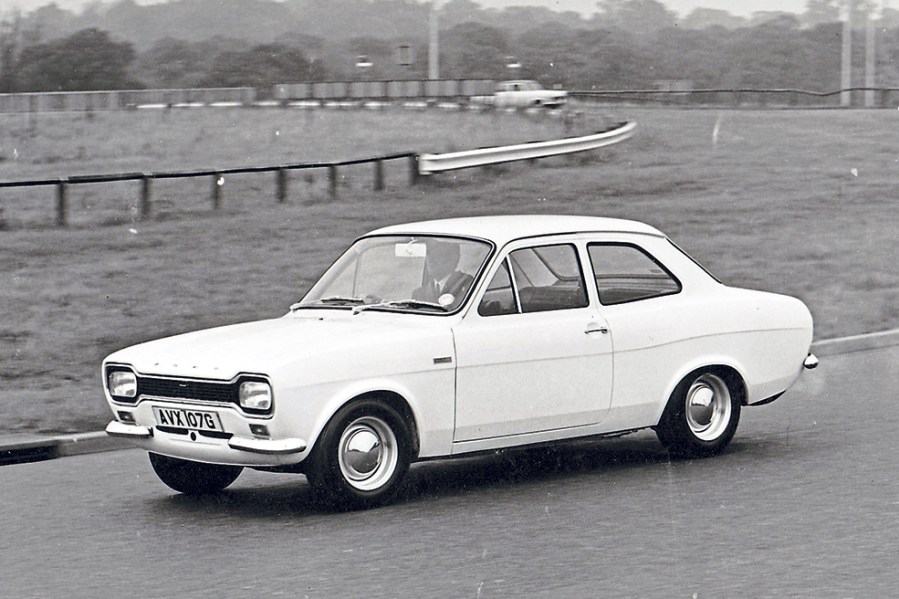
Ford Escort Twin Cam
The idea for the Ford Escort Twin Cam was born out of a desire to continue the Cortina’s success, and it stood to reason that the same 1.6-litre engine in the smaller and lighter Escort would be a tantalising proposition.
The Twin Cam was part of the original Mk1 Escort range announced at the beginning of 1968, and despite having 110bhp and a reinforced Type 49 bodyshell, it looked much like any other model – a contrast to the later Mexico and RS2000 with their bold optional graphics. The early cars even had rectangular headlamps.
The car was not homologated for the beginning of the 1968 season so the Alan Mann Racing team had to start with a Cortina. However, Australia driver Frank Gardner had the Escort from round four onwards and clinched the title with a round to spare.
With the new RS1600 range-topper already in production, the Twin Cam was discontinued in June 1971, with 1263 cars built. The Escort would continue to be a contender in the BSCC until the middle of the decade, but from 1974 would be replaced by competitive Capris in 3-litre form.
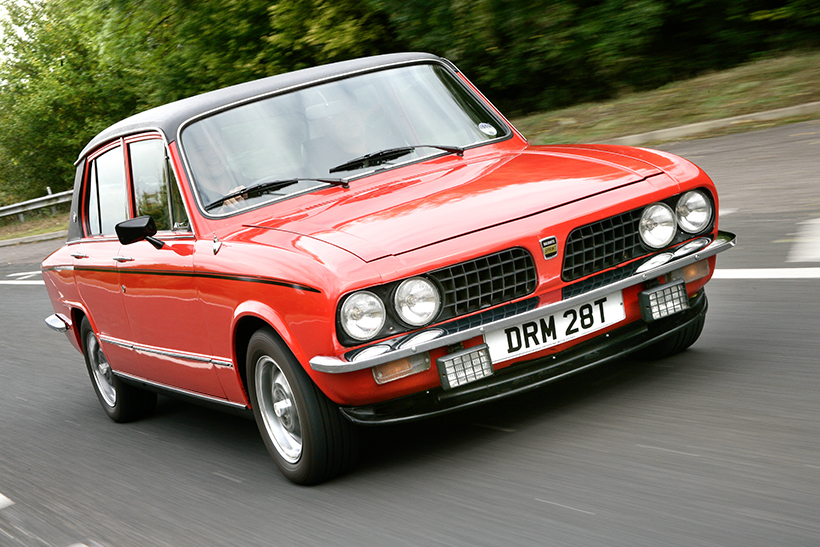
Triumph Dolomite Sprint
The 1970s would see some new manufacturers get their hands on the title, with Bill McGovern winning three consecutive titles in a Sunbeam Imp, Frank Gardner winning the ’73 title in a Chevrolet Camaro and Bernard Unett doing likewise in 1974 with a Hillman Avenger. But then it was British Leyland’s turn to shine.
BL was looking to boost the Triumph Dolomite’s power to allow it to compete more effectively in motor sport, but money was tight and options were limited to a development of the slant-four engine that had been funded by Saab and so had first appeared as a 1.7-litre unit in the Saab 99. The solution was ingenious and won a Design Council award at the time. The Sprint’s engine capacity was increased to 1998cc and it became the first mainstream production car with a 16-valve head, but it used just a single camshaft, with the inlet valves operated by fingers from the exhaust valve.
In production form the Sprint’s engine was rated at 127bhp, but in race form the Broadspeed-prepared car driven by Andy Rouse was good for closer to 220bhp. Rouse and the Sprint would take second place honours in the 1974 series and the championship title in 1975, with Tony Dron then taking the car to second place in 1977 then third in 1978 before the car was no longer competitive.
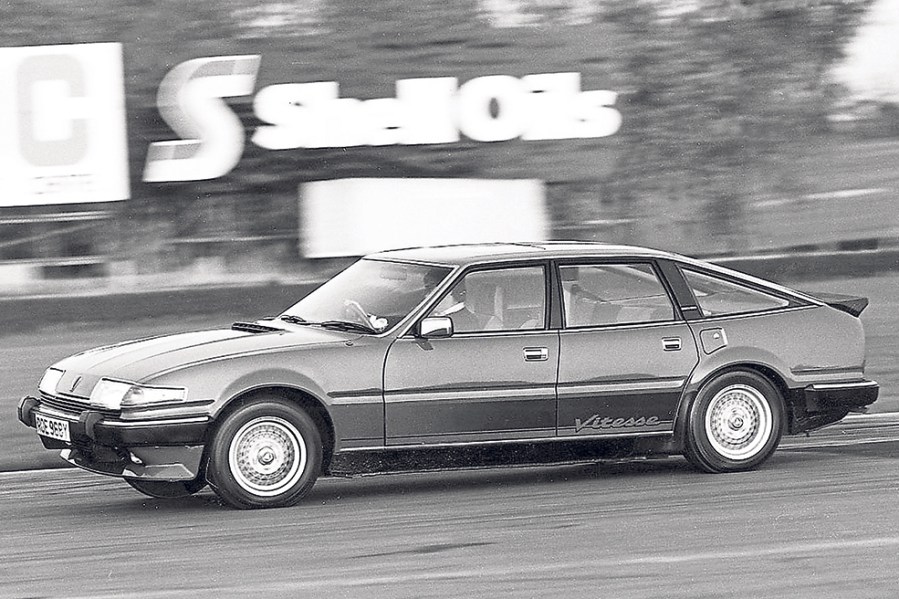
Rover Vitesse
By the turn of the next decade, there was an increasing challenge from Japanese manufacturers, with title wins going to a Mazda RX-7 in 1980 and ’81, and a Toyota Corolla in 1982. However, there was still time for a big-engined bruiser to shine.
No serious thought had been given to motorsport when the Rover SD1 was unveiled in 1976, but that changed when the BSCC engine limit was raised from 3.0-litres to 3.5-litres in 1980. John Davenport, director of BL Motorsport, managed to gain approval to develop a racing variant, with mixed but encouraging results. Tom Walkinshaw Racing (TWR) would take the reins for 1981, winning multiple races that year before taking class honours in 1982.
Naturally, Rover’s marketing team was keen to exploit this, and the race team was keen for performance parts to be homologated for racing. It was this combination that led to the development of the Vitesse model. Fuel injection was added to liberate 190bhp in road-going spec, combined with uprated suspension, better brakes and fat alloys. There was also a new rear spoiler that genuinely provided extra downforce. The Vitesse was announced in October 1982, and went on sale the following year.
With Group A European rules in force for the 1983 BSCC season, the Vitesse absolutely dominated. However, an argument over non-homologated parts saw the title stripped away, with the decision only coming halfway through 1984. Rover duly withdrew its Works cars and would now compete in the European Touring Car series only, but the 1984 BSCC title still went to an SD1 courtesy of Andy Rouse in his privately entered steed. Meanwhile, the famous Bastos-liveried SD1s competed at the business end of the ETCC.
Further homologation-led changes included a deeper front air dam for 1985, and for 1986, the Vitesse ‘twin-plenum’ was produced featuring a new twin side-entry throttle plenum fuel injection system developed by Lotus to provide an improved air/fuel mixture. It’s these twin-plenum cars that are now the most desirable.

Ford Sierra RS Cosworth
The be-winged Ford Sierra RS came about purely for homologation reasons, stemming from Ford’s desire to compete in Group A circuit racing. Andy Rouse had already won the 1985 BSCC championship in an XR4Ti, but that model was never sold outside of the United States and Canada.
Northampton firm Cosworth had been working on a twin-cam, 16-valve version of the Pinto 2-litre engine, and it was this motor in forced-induction form that would become the legendary YB. It’s first appearance was in the new three-door Cosworth first shown at the 1985 Geneva Motor Show but not available until 1986. In road form it kicked out 204bhp-plus, meaning 149mph and 0-60mph in 6.2 seconds.
Ford’s masterstroke was that the car you saw on track was very similar to the car in your local showroom. Even the massive wing – needed to ensure sufficient downforce at 180mph for the European racers – was on offer to the public, and a legend was born.
In 1987, production of an ‘evolution’ version of the original car took place for homologation purposes, using 500 cars from the original production run and resulting in the RS500. Completed by Tickford, the 224bhp RS500 was good for 154mph and featured a bigger turbo, plus eight injectors.
Despite its searing pace, the Cosworth took time to see a championship win. It was third with Andy Rouse in 1988 and third with Rob Gravett in 1989 before Gravett took the 1990 title with fellow RS500 pilots Rouse third and Tim Harvey fourth.
Of course, by that point the three-door Cosworth had long been discontinued. The Cosworth engine was instead installed in the four-door Sierra Sapphire from 1988, with the recipe further improved in 1990 when Ford added the all-wheel drive hardware.
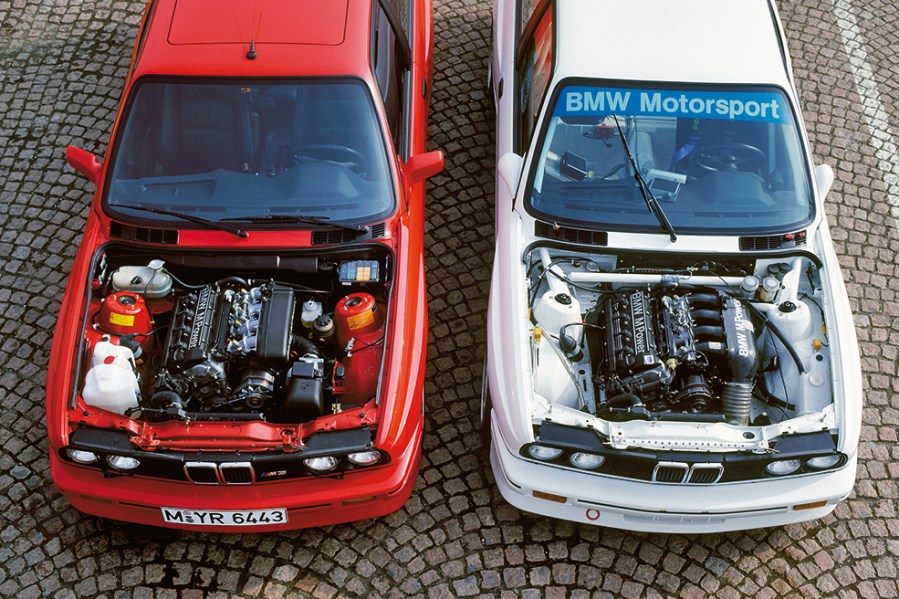
BMW M3 (E30)
During the late 1980s, only one racer was as iconic as the Sierra Cosworth and that’s the BMW M3. Taking the second-generation E30 3 Series as a base, the car was developed in-house by BMW Motorsport with a steely focus on winning.
The range-topping road car was the 325i, but its heavy six-cylinder was ditched in favour of a lighter four-pot, BMW taking the old iron-blocked M10 engine from the 2002 era as the basis. The resulting S14 engine was rated at 200bhp in road trim but was run at closer to 300bhp for racing. Revised suspension arms and bushes dramatically improved the handling, and with box-arched bodywork it looked the part, too.
The M3 was presented to the public at the 1985 Frankfurt Motor Show, and production began in March 1986. Although 5000 had to be built to satisfy homologation rules, nearly 18,000 were produced in all, and following year-to-year rule changes, new specials were sold in limited volumes. These included the Evo 1, Evo 2, and Sport Evolution, with various upgrades made along the way.
The car was incredibly successful, particularly on the European stage, but also in the BTCC. Frank Sytner took the 1988 title with his Prodrive car in its second year out. The M3 also took the 1991 title in de-stoked 2-litre form, with Will Hoy at the wheel.
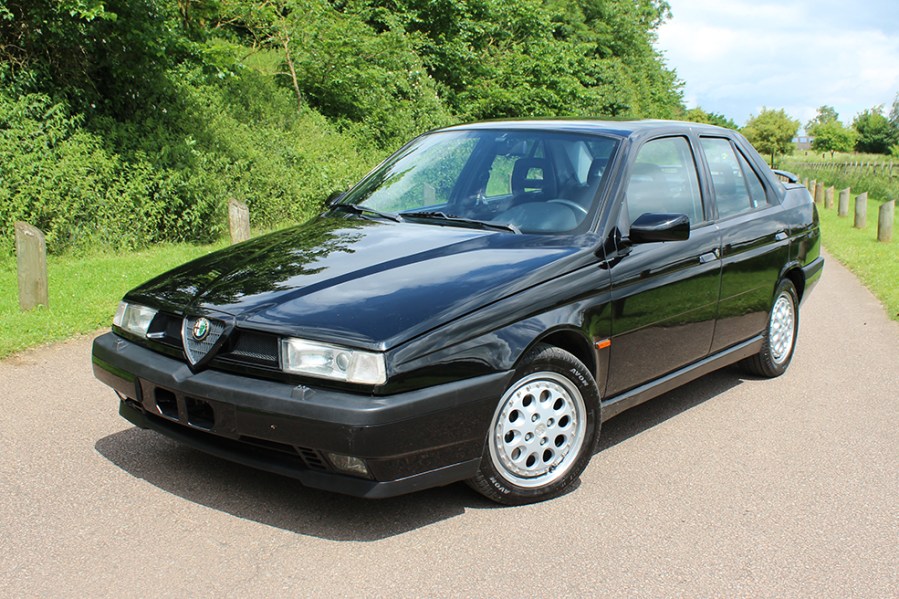
Alfa Romeo 155
The wholesale move to a non-turbo 2.0-litre class in 1991 (later adopted worldwide under the ‘SuperTouring’ name) meant greater interest from manufacturers. The M3 was still a contender, but otherwise it was fleet cars: Cavaliers, 405s, Carinas and – from 1993 – the Mondeo. There were a couple of anomalies though to liven things up. Who can forget Volvo, which entered the 1994 series with an 850 T5 estate?
Perhaps the biggest controversy, however, was created by Alfa Romeo. The 155 swept the board in the 1994 BTCC, thanks to clever aerodynamic aids. The rules allowed additional spoilers if they were fitted to 2500 road cars and Alfa had exploited this by producing the spoilered-up 155 Silverstone road car, supplied with spoiler extension brackets in the boot.
After complaints, Alfa Corse was told to run without aerodynamic aids at Oulton Park, but left the circuit in protest. Subsequently, the team was told to race with the spoilers in their retracted road car position, which levelled the field slightly but still saw Gabriele Tarquini keep his advantage and win the championship.
The issue had long-lasting repercussions, with all teams required to use showroom-spec rear spoilers for the rest of the season, until full aero was allowed for the following year. The Alfa team, now run by Prodrive, had a disappointing year and withdrew at the end of 1995.
Similar controversy came in 1996 when Audi muscled in with its quattro four-wheel drive, winning the title despite being hit with weight penalties. The Audi’s wins were wiped out the following year by the Renault Laguna though, with F1 team Williams clearly lending the car massive pace.
The high number of manufacturer-backed teams meant big budgets were needed to be competitive and saw several withdrawals until the 2000 season, when only Ford, Honda and Vauxhall remained. Nevertheless, the ‘SuperTouring’ is often remembered as successful period of the BTCC, and cars from the era are fast rising in appreciation.


